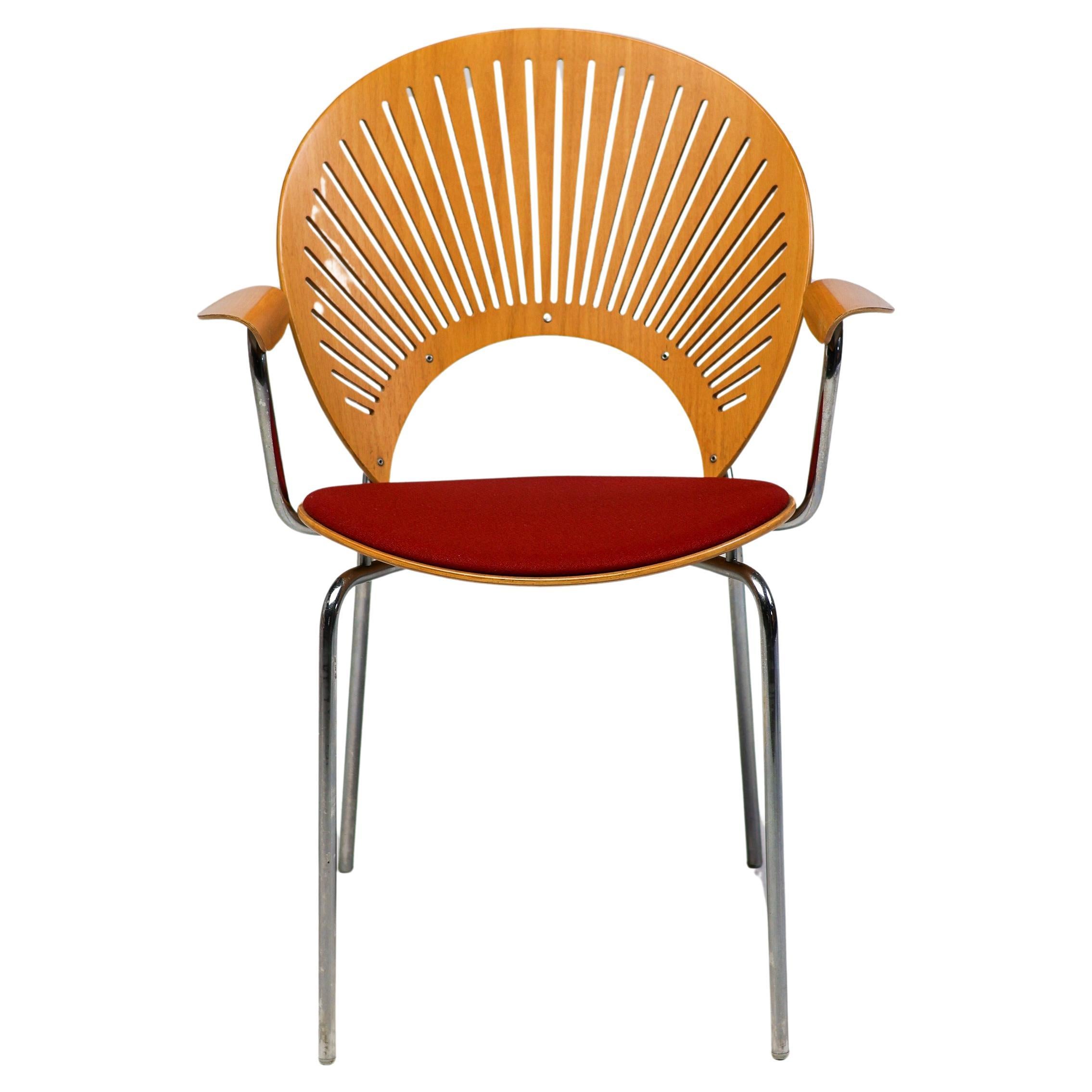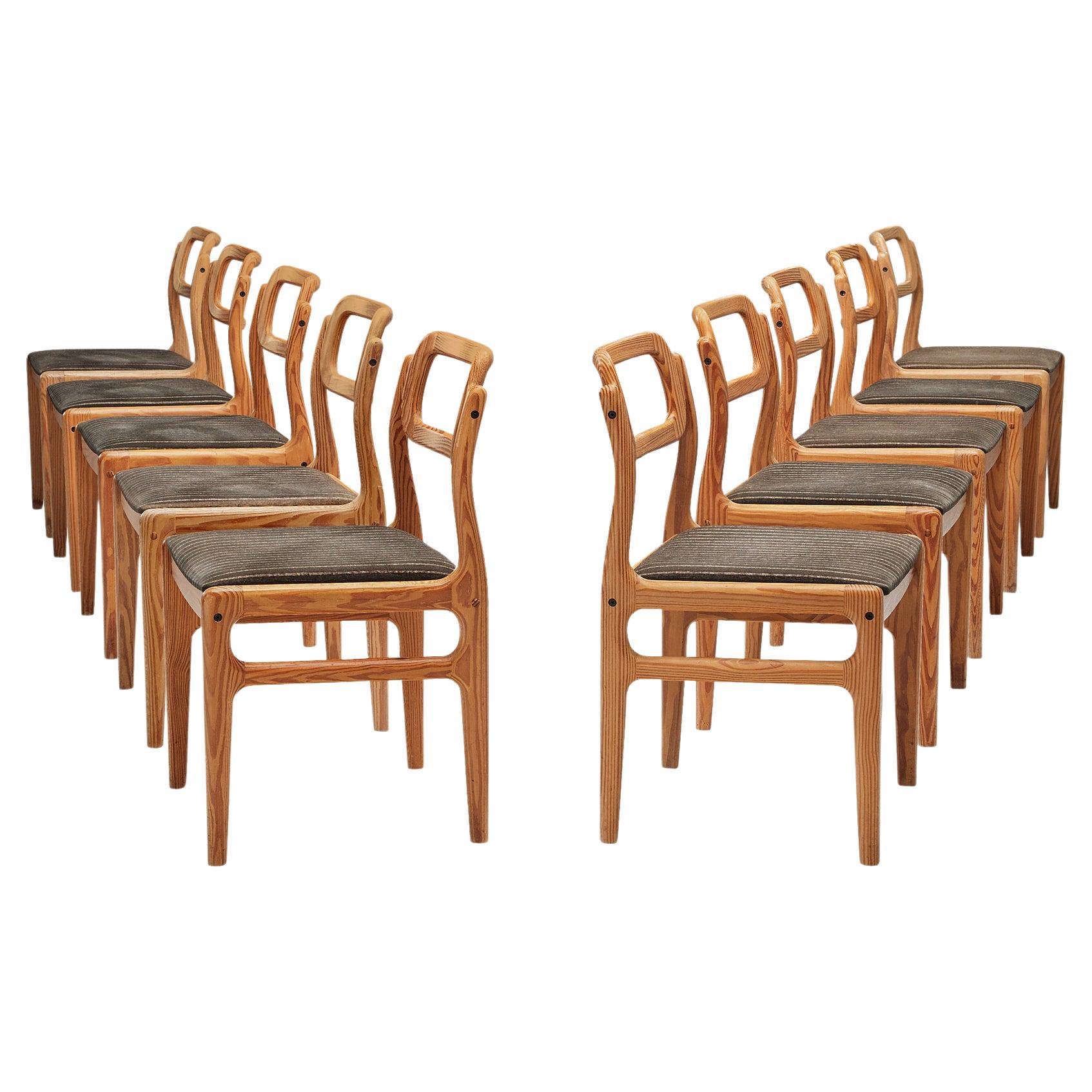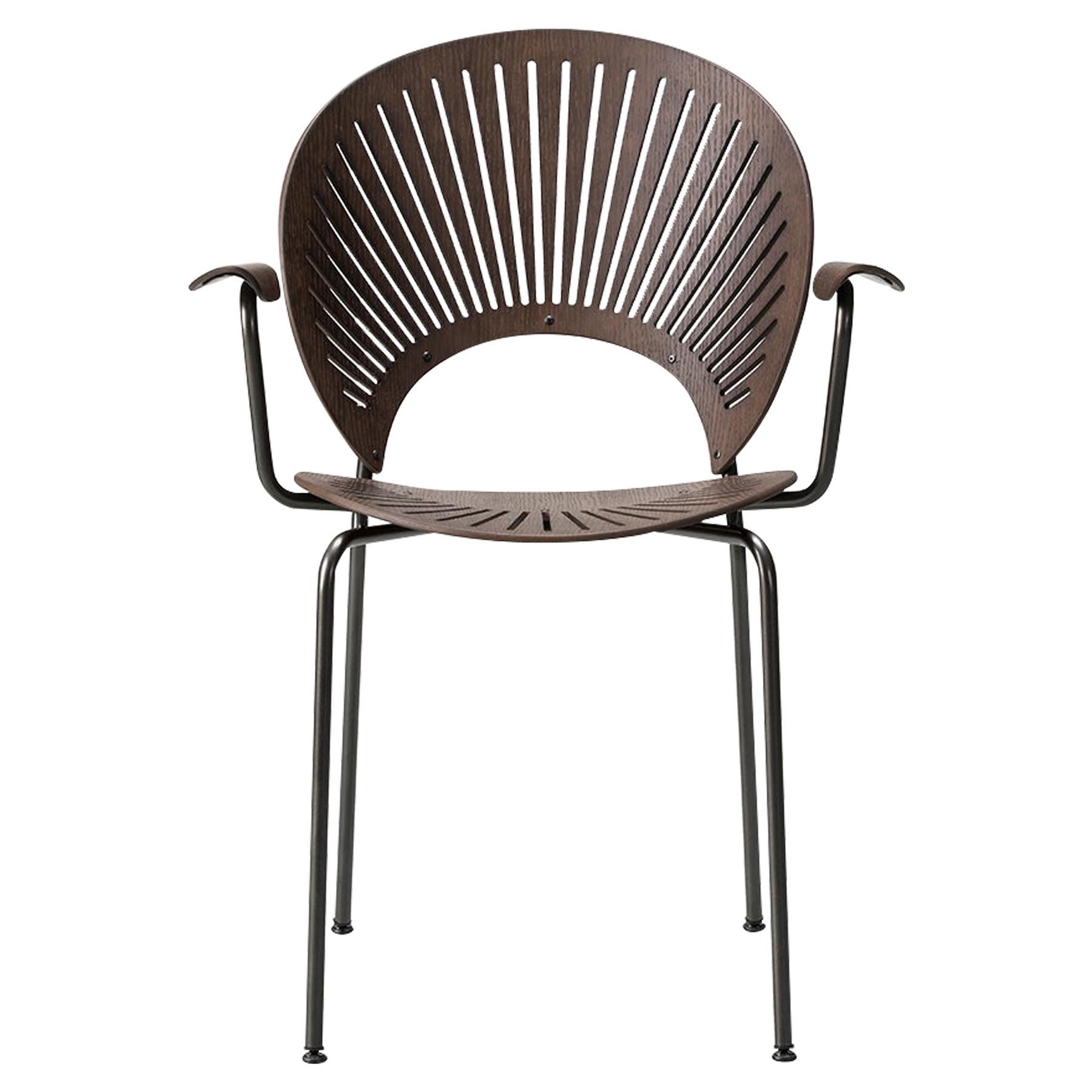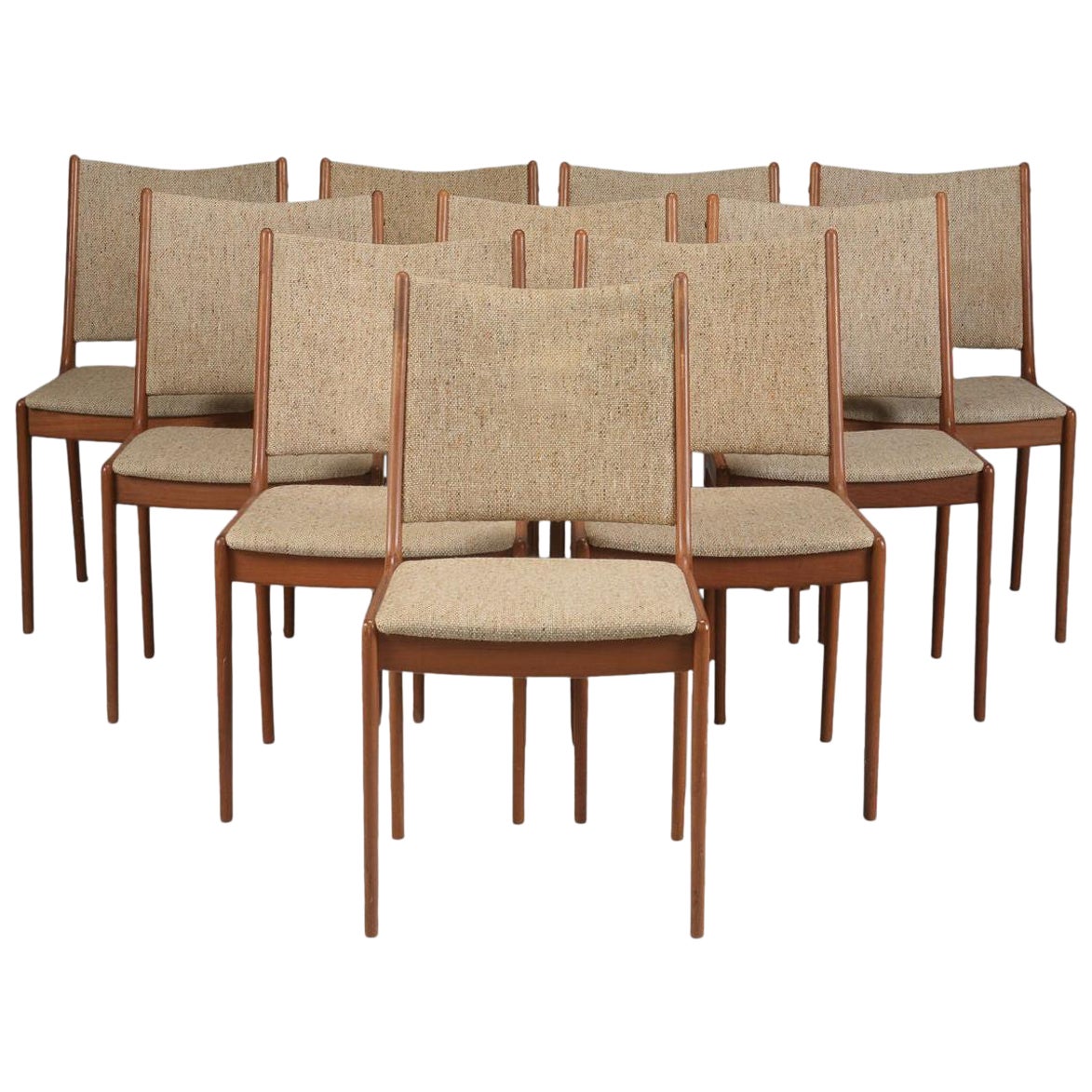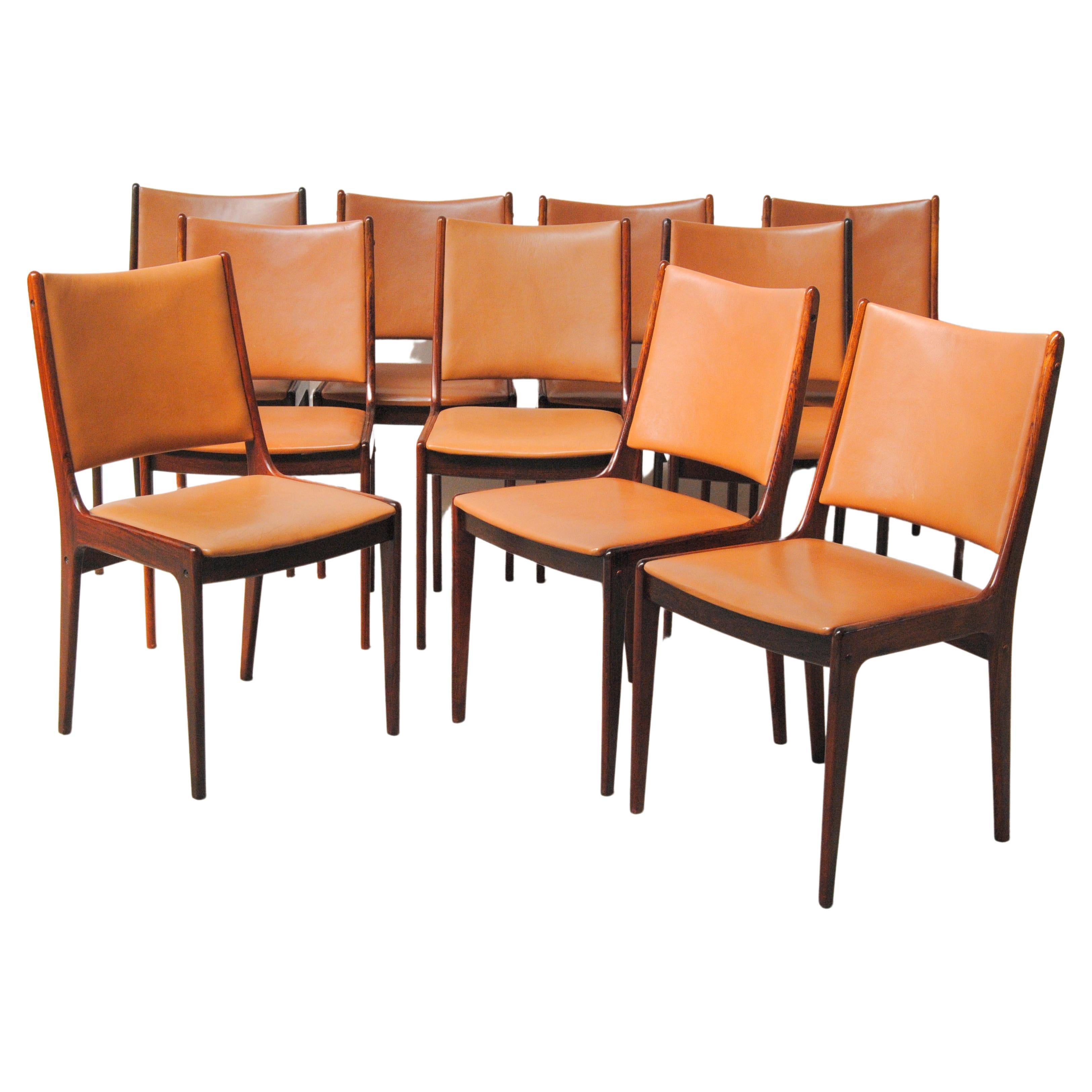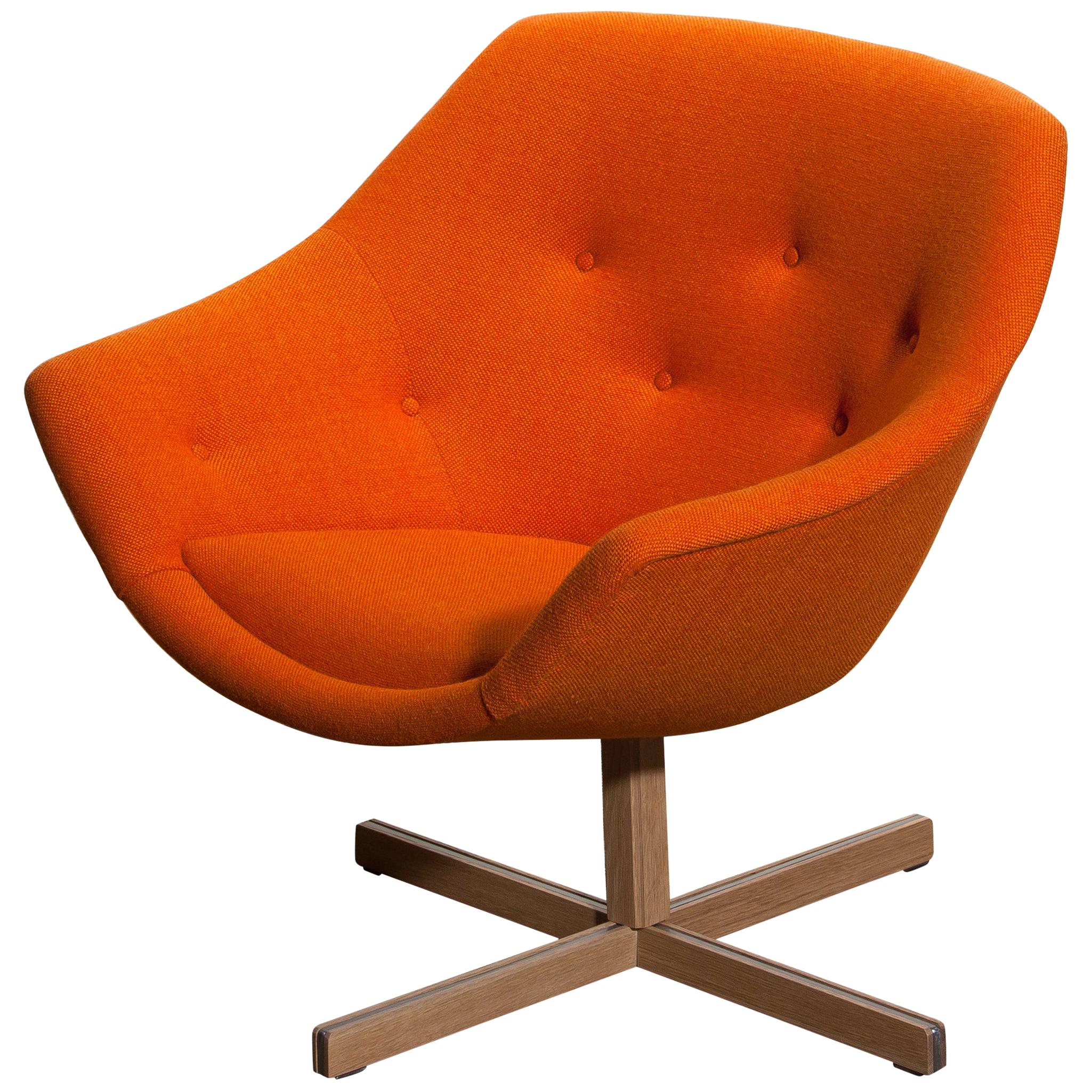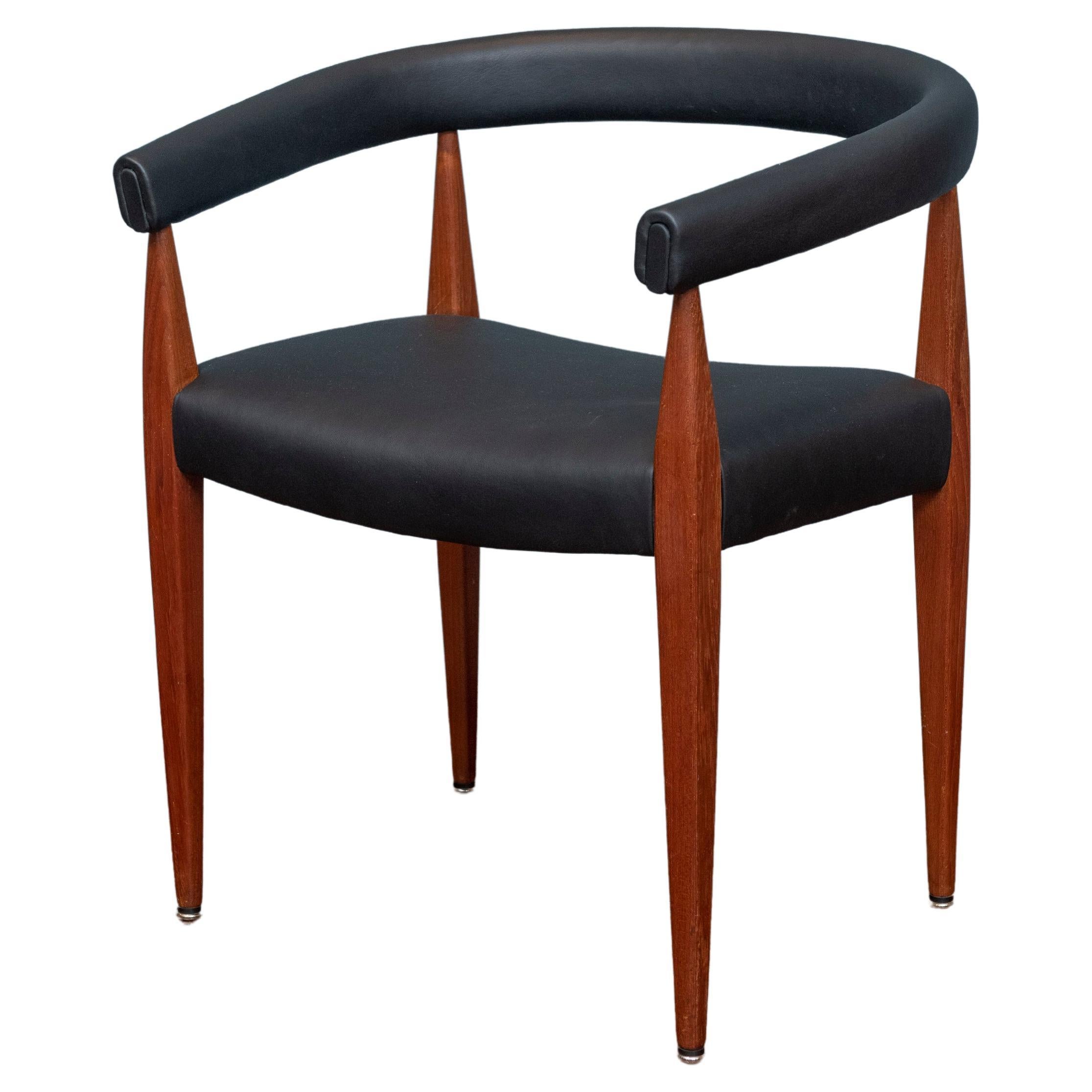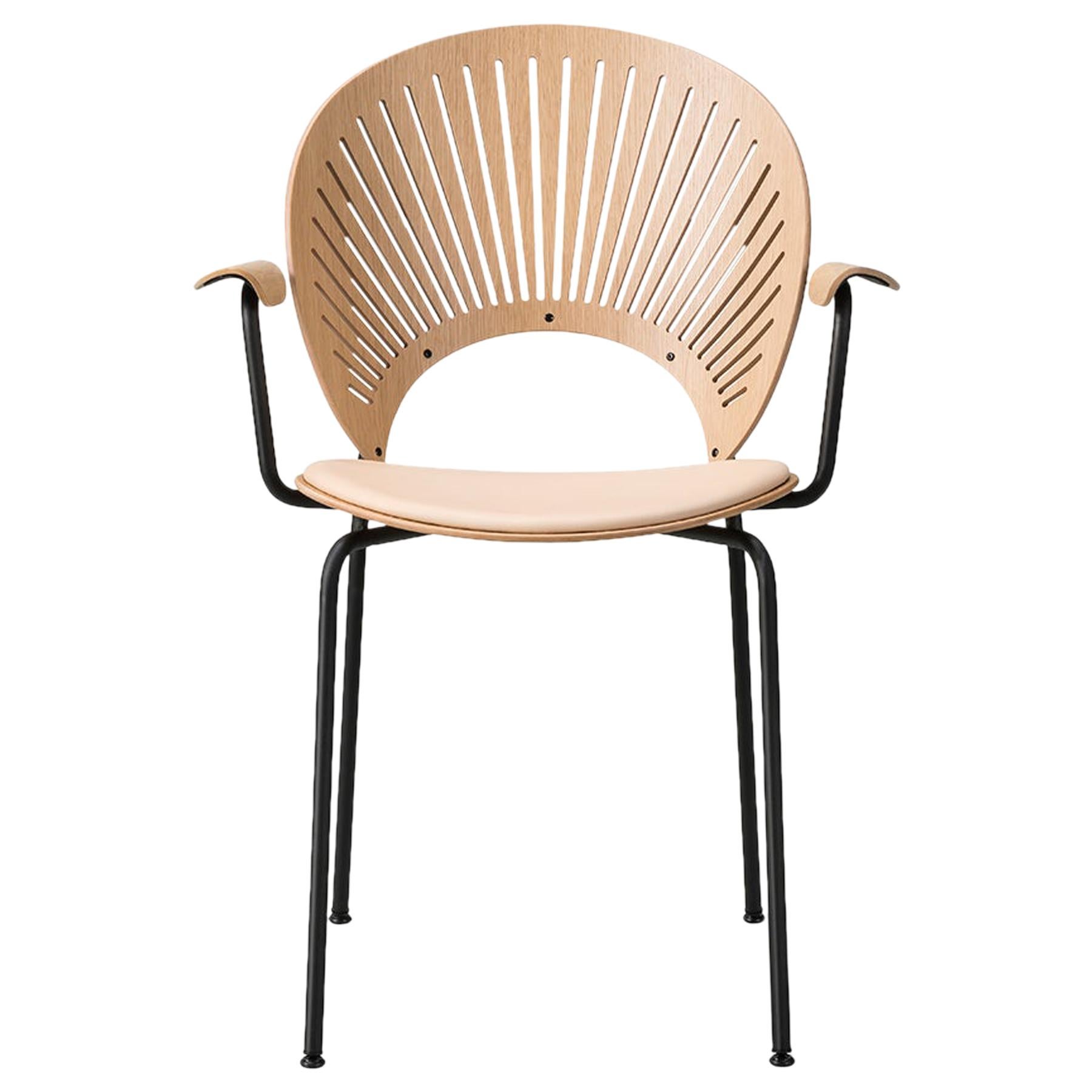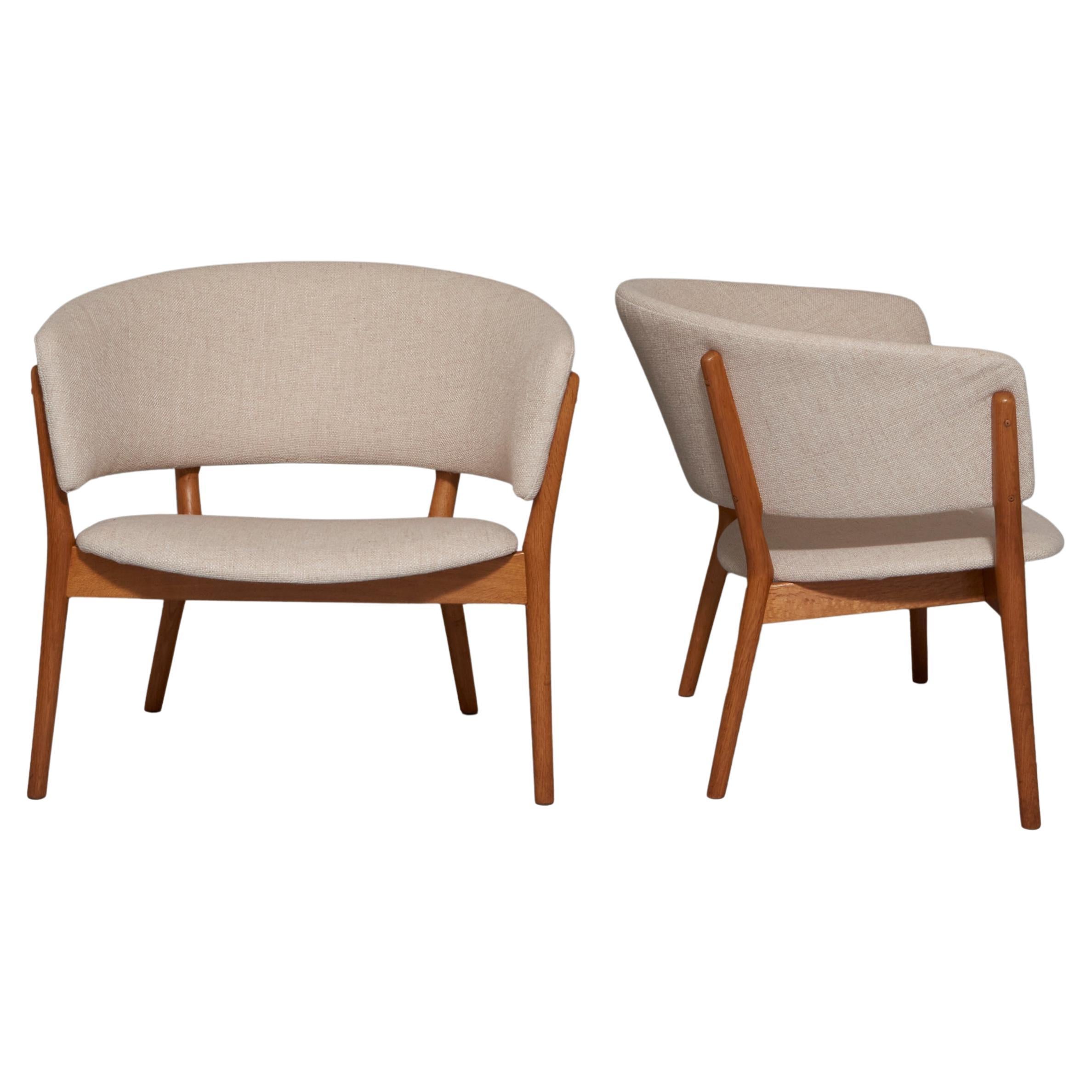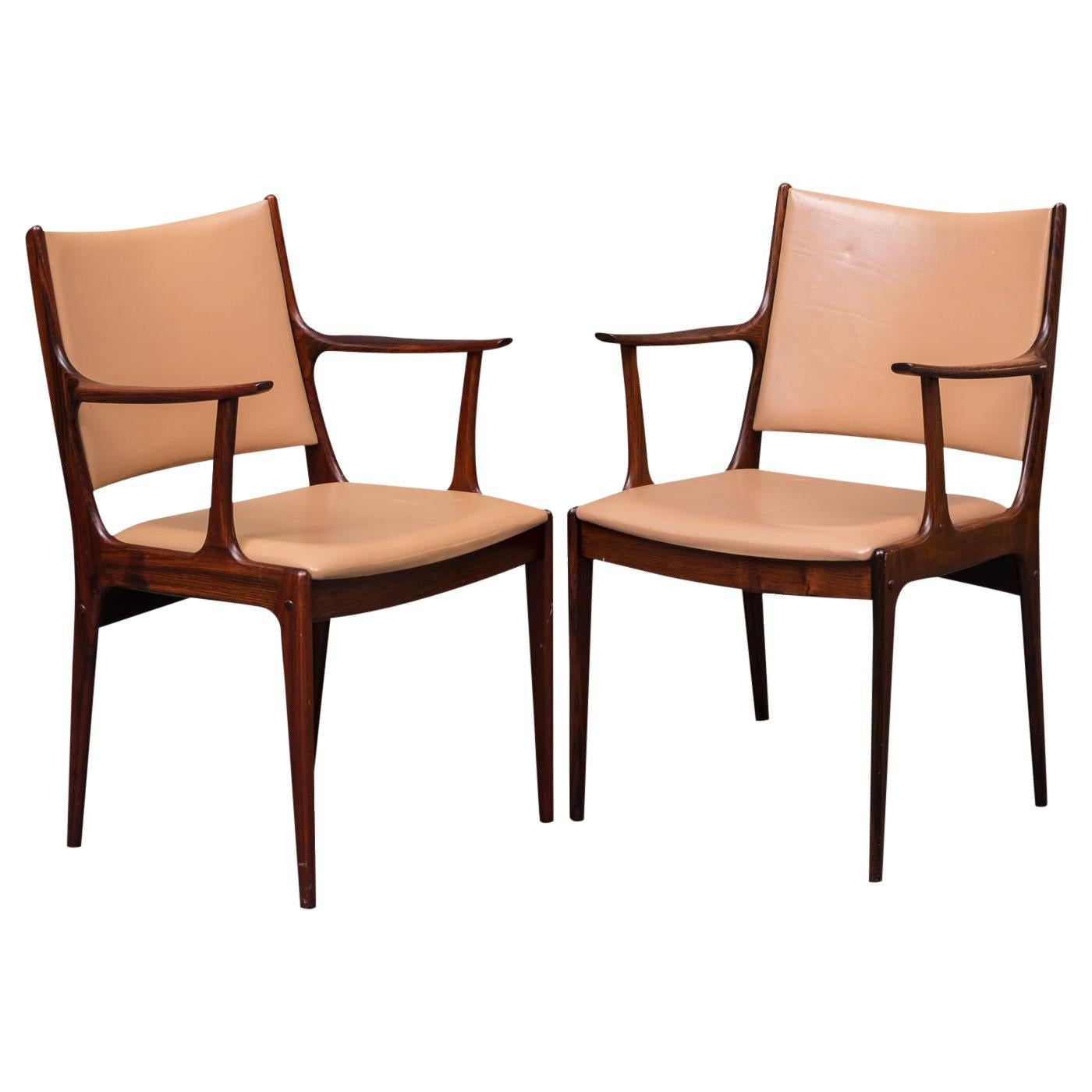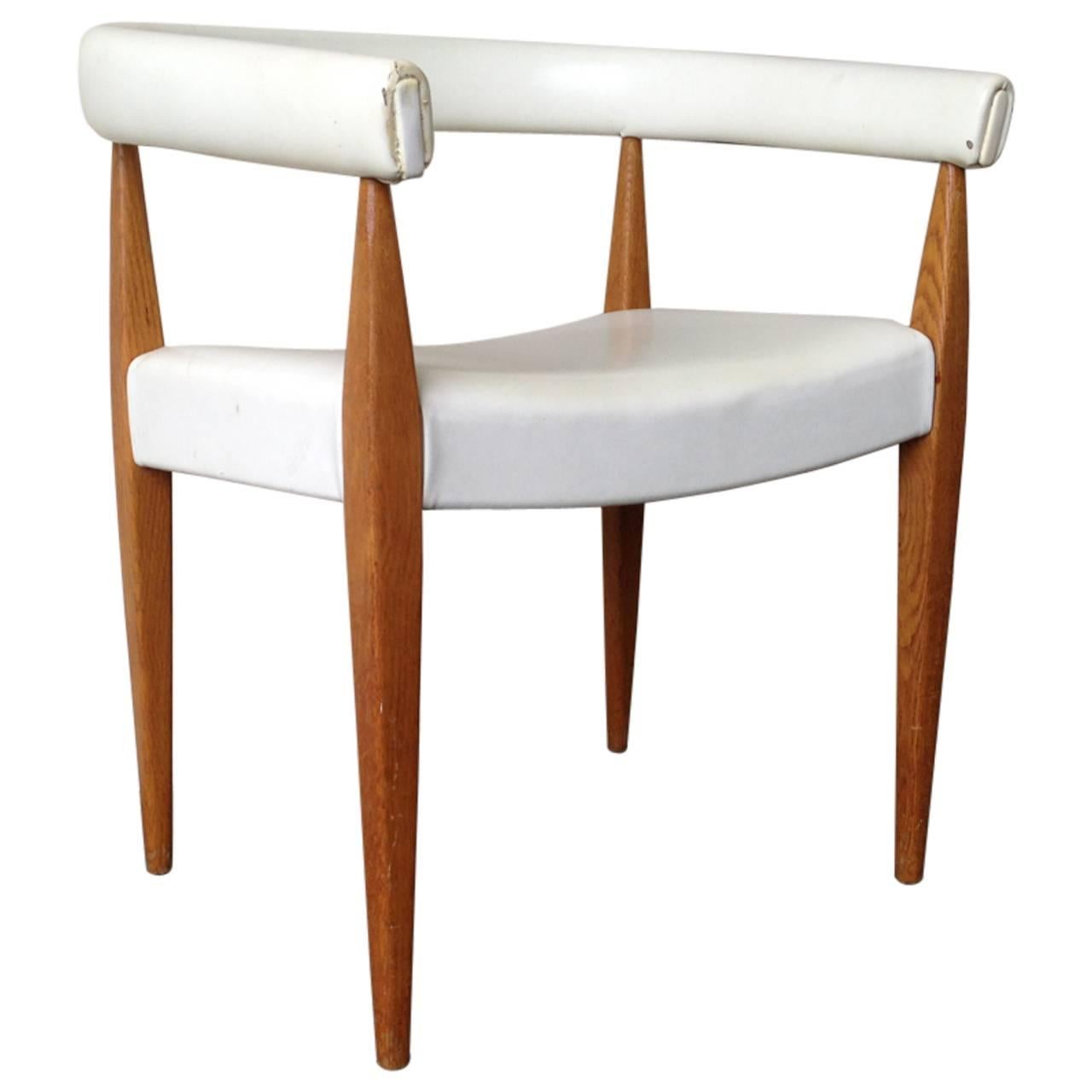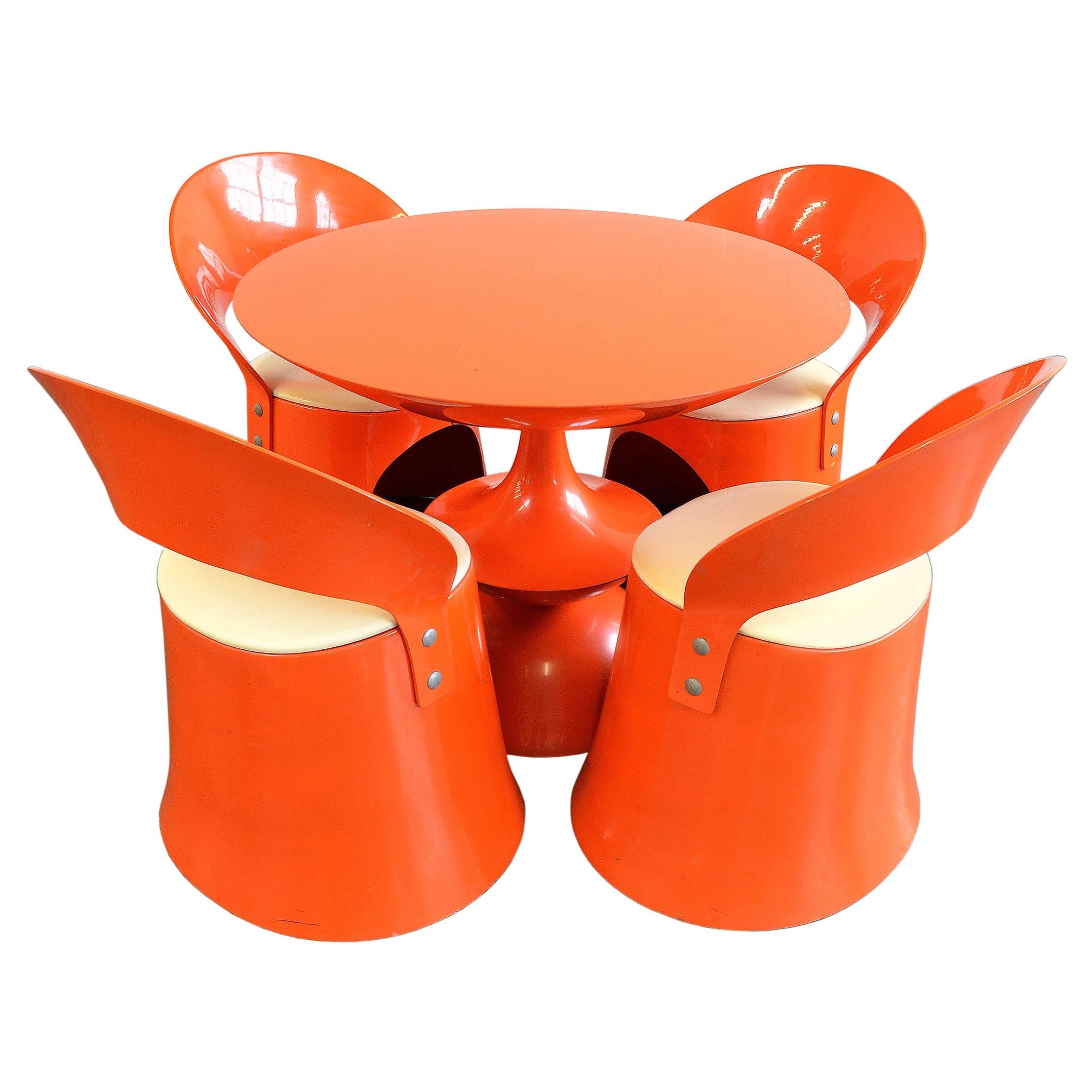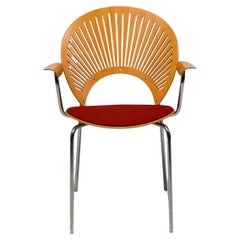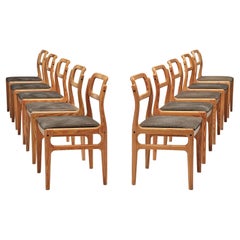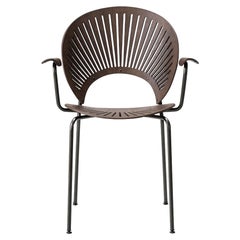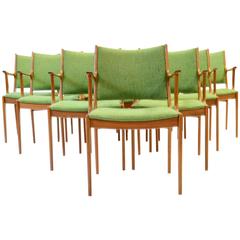
Ten Johannes Andersen Armchairs with Nanna Ditzel Hallingdal Green Fabric
View Similar Items
Ten Johannes Andersen Armchairs with Nanna Ditzel Hallingdal Green Fabric
About the Item
- Creator:
- Dimensions:Height: 33 in (83.82 cm)Width: 22.25 in (56.52 cm)Depth: 22 in (55.88 cm)Seat Height: 17.25 in (43.82 cm)
- Style:Mid-Century Modern (Of the Period)
- Materials and Techniques:
- Place of Origin:
- Period:
- Date of Manufacture:1965
- Condition:Wear consistent with age and use.
- Seller Location:Portland, OR
- Reference Number:1stDibs: LU79066403763
Nanna Ditzel
Nanna Ditzel was the most versatile and creative female designer that Denmark produced in the 20th century. Ditzel brought her talents to bear on a staggering array of forms — she designed furniture, jewelry, tableware and textiles; and she shaped her pieces using an equally astonishing variety of materials, from wood and wicker to silver, ceramics and fiberglass.
Born in Copenhagen, she trained as a cabinetmaker at the Royal Academy's furniture school — overseen by the great craftsman of the day, Kaare Klint — and graduated in 1943. Ditzel’s early work adhered to the classic Danish modernist tenets of simplicity, comfort and quality, and her armchairs, with their softly curved backrests are much in the spirit of Hans Wegner. Ditzel’s signature piece of that time is her Ring chair. Designed along with her husband, Jørgen Ditzel, a fabric maker, the chair has a semicircular padded armrest that seems to embrace the sitter. Ditzel began designing in wicker and in 1959 produced the Hanging chair. The piece, suspended from the ceiling by a chain, became a favorite for fashion shoots and may be as iconic of the 1960s as Eero Aarnio’s plastic Ball chair of 1963.
In 1956, Ditzel began designing for the Danish silverware firm Georg Jensen. In an association that lasted some 40 years, Ditzel would create organically shaped jewelry, barware, ceramic tableware and even tablecloths. Like her fellow Dane Verner Panton, Ditzel was not afraid to embrace industrial materials, and she began designing fiberglass chairs in the mid-1960s. Some of her most flamboyant work came toward the end of her career, in pieces such as 1989’s Bench for Two, with its shocking Op-art finish, or the Trinidad chair of 1992, with it’s sunburst-like, cut-though backs. Such feats of creativity were a fitting coda to one of the most imaginative, prolific and remarkable women of modern design.
Johannes Andersen
Denmark has a long tradition of producing some of the most acclaimed furniture designers of the 20th century. Johannes Andersen is no exception — his name is synonymous with mid-century modern design. He elevated Scandinavian modernism’s prioritization of practicality and space conservation to new heights and worked with luxurious woods like teak, mahogany and rosewood for a range of designs that merged grace and function.
After completing his cabinetmaker apprenticeship in his early 20s, Andersen began to design for several furniture makers, including CFC Silkeborg and Trensum. A few years later, he opened his own workshop and enjoyed success from the outset. Free of the constraints of working under another studio, Andersen quickly developed his own, distinctive style that drew on Danish functionalism and human-centered design.
After the end of World War II, Andersen noticed the worldwide postwar consumption boom and the burgeoning interest in Scandinavian modern design. He took full advantage of this and began to sell his shapely and eye-pleasing tables, chairs and sideboards to markets outside of Denmark. Other Scandinavian manufacturers took notice of Andersen’s work, which led to many successful, career-long collaborations for the furniture maker.
Like Finn Juhl and Alvar Aalto, Andersen was deeply drawn to organic shapes and flowing lines. He transformed furniture’s traditionally square or rectangular panels and surfaces — like the tops of coffee tables and seat-backs of dining room chairs — into imaginative half-moons with rounded corners, beveled edges and fluid contours. His unexpected use of curves is the highlight of his sleek Capri line for Trensum and can be found in his comfortable saddle-shaped Allegra bar stool and playful but elegant Smile coffee table, which sports an anthropomorphic grin in the slot intended to hold magazines.
Andersen wanted his furniture to be compact — he experimented with reducing the footprints of bulky furniture, and his simple, iconic credenzas, sideboards and folding bar cabinets were born. These and other vintage Johannes Andersen furnishings are in high demand today by collectors and mid-century modern enthusiasts all over the world.
On 1stDibs, find a wide range of Johannes Andersen tables, seating, cabinets and other furniture.
- Ten Trinidad Armchairs by Nanna DitzelBy Fredericia Stolefabrik, Nanna DitzelLocated in Dronten, NLVery rare Trinidad teak dining chairs with arms by Nanna Ditzel for Fredericia Stolefabrik Denmark, circa 1995. The seat cushions in red f...Category
1990s Danish Scandinavian Modern Dining Room Chairs
MaterialsChrome, Steel
$1,100 / item - Johannes Andersen Set of Ten Dining Chairs in PineBy Johannes Andersen, Uldum MøbelfabrikLocated in Waalwijk, NLJohannes Andersen for Uldum Møbelfabrik, set of ten dining chairs, pine, fabric, Denmark, 1960s These dining chairs belong to the Scandinavian Modern style and were designed by Joha...Category
Vintage 1960s Danish Scandinavian Modern Dining Room Chairs
MaterialsFabric, Pine
$7,450 / set - Nanna Ditzel Trinidad ArmchairBy Fredericia, Nanna DitzelLocated in Berkeley, CAThe precise transparency of the Nanna Ditzel Trinidad armchair almost dissolves in a play of light and shadow, yet at the same time gives the chair a s...Category
21st Century and Contemporary American Mid-Century Modern Armchairs
MaterialsOak
$1,248 / item - Ten Restored Johannes Andersen Teak Dining Chairs, Custom Reupholstery IncludedBy Johannes Andersen, Uldum MøbelfabrikLocated in Knebel, DKSet of ten 1960s Johannes Andersen dining chairs in teak made by Uldum Møbler, Denmark. The dining chairs feature a clean simple yet elegant design that will fit in well in most h...Category
Vintage 1960s Danish Scandinavian Modern Dining Room Chairs
MaterialsTeak
- Ten Restored Johannes Andersen Rosewood Dining Chairs Custom Upholstery IncludedBy Johannes Andersen, Uldum MøbelfabrikLocated in Knebel, DKSet of ten fully restored 1960s Johannes Andersen dining chairs in rosewood made by Uldum Møbler, Denmark. The set of dining chairs feature a clean simple yet elegant design that wi...Category
Vintage 1960s Danish Scandinavian Modern Dining Room Chairs
MaterialsRosewood
- 1960's Carl Gustaf Hiort Oak Swivel Armchair with Nanna Ditzel FabricBy Puunveisto OY, Nanna Ditzel, Carl Gustaf Hiort af OrnäsLocated in Silvolde, GelderlandFantastic Mandariini swivel chair made by Carl Gustaf Hiort for Puunveisto Oy, wood work Ltd. This chair is upholstered with a buttoned orange fabric 'Hallingdal' by Kvadrat designed by Nanna Ditzel on an oak swivel base...Category
Vintage 1960s Finnish Armchairs
MaterialsFabric, Oak
$4,379 Sale Price42% Off
